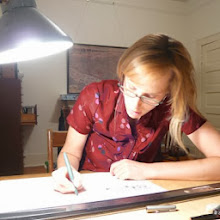 The first flag of independence raised in the South, by the citizens of Savannah, Ga. November 8th, 1860 / drawn by Henry Cleenewerck, Savannah, Ga. ; lithographed by R.H. Howell, Savannah, Ga.
The first flag of independence raised in the South, by the citizens of Savannah, Ga. November 8th, 1860 / drawn by Henry Cleenewerck, Savannah, Ga. ; lithographed by R.H. Howell, Savannah, Ga.War Between the States
War of the Rebellion
War for Southern Independence
War of Northern Aggression
Second American Revolution
SezessionskriegAmerikanischer Bürgerkrieg (German)
The War
The Late Unpleasantness
The Lost Cause

 Reading the book over the course of about five months, these events lodged in my mind. I think they most epitomize the cruelty, arrogant dissent, disgrace, jubilation, disconsolation, fear, and hope between the 1850s and 1870s in Savannah.
Reading the book over the course of about five months, these events lodged in my mind. I think they most epitomize the cruelty, arrogant dissent, disgrace, jubilation, disconsolation, fear, and hope between the 1850s and 1870s in Savannah.
New Year's Day festivities included a "celebratory but subdued" dinner held by black clergy from all over the city. About 3,000 blacks joined in New Year's Eve festivities of the Union soldiers near Port Royal SC when an elderly black man and two women spontaneously began to sing My Country, 'Tis of Thee...
Savannah freedman James Simms wrote, of the Emancipation, "Who, then, could estimate or describe with tongue or pen the struggle in their hearts between hope and fear? Who can measure the prayer offered in secret at this period and know its effects?" (Saving Savannah, Jacqueline Jones)
 First African Baptist Church, Historic American Buildings Survey,1936
First African Baptist Church, Historic American Buildings Survey,1936 "Many African Americans saw Union troops...as a grand army of liberation. At the sight or sound of the approaching vast procession, thousands of black men, women, and children along the way came out into the open, eager to free themselves as the Yankees passed by. Some emerged from the slave quarters, others from nearby swamps where they had been hiding. To greet the invaders, some dressed in their finest clothes - the women in fancy bonnets, the men wearing a pair of the master's cast-off gloves...For the most part, northern soldiers regarded the slaves with a combination of pity, contempt, and amusement." (Saving Savannah, Jacqueline Jones)
The slaves provided food, laundry and cook services, military intelligence, and muscle to the Union troops. At Ebenezer Creek, near Savannah, a Union general and his troops crossed over a pontoon bridge then pulled it up before the black refugees following them could cross. Some drowned, others were left to die at the hands of Confederate troops.
 Family and former slave quarters at The Hermitage plantation, Savannah (Detroit Publishing Co. c1907)
Family and former slave quarters at The Hermitage plantation, Savannah (Detroit Publishing Co. c1907)"On the morning of January 10, 1865, five hundred black children, ragged, shoeless, and shivering from the cold, assembled in the sanctuary of Savannah's First African Baptist Church. Spilling out into the street, they marched en masse through Franklin Square to the edge of the city market on Ellis Square, and on to the imposing three-story brick structure on St. Julian Street - their new school, the old Bryan Slave Mart...This "army of colored children...seemed to excite feeling and interest, second only to that of Gen. Sherman's army," in the words of one observer. Then, in the building where traders had bought and sold slaves just a few weeks before, pupils took their seats...surrounded by remnants of the old regime - handcuffs, whips, paddles, sales receipts for slaves - and positioned in front of the auctioneer's desk, now occupied by their teacher." (Saving Savannah, Jacqueline Jones)
These were the bold efforts of the black-led Savannah Education Association (SEA.) By Spring 1866, the organization was unable to pay its teachers without government or private funding and was forced to fold. Public funds for education of former slaves and their children was almost non-existent. The AMA, American Missionary Association, backed by Northern philanthropists, competed to monopolize black education, aimed to shut down the SEA and was satisfied when there was "no opposition" in the field of black education.
 Print showing President Grant sitting at a large table, with group of men clustered around (identitied below print), signing the 15th amendment granting that the right to vote cannot be denied on basis of race or color. Vignettes along sides and bottom show African Americans in military service, at school, on the farm, and voting.
Print showing President Grant sitting at a large table, with group of men clustered around (identitied below print), signing the 15th amendment granting that the right to vote cannot be denied on basis of race or color. Vignettes along sides and bottom show African Americans in military service, at school, on the farm, and voting. 
While in Savannah, the Freedom Trail tours offer the history of enslaved and freed African-Americans in Savannah. The Ralph Mark Gilbert Civil Rights Museum chronicles the Civil Rights Movement in Savannah in the 1960s. Some places that saw these events unfold - rallies, sham elections, secret education, slave sales, stocks and chain gangs, parades and fights, trials - keep their secrets from the surface. Some memorialize with plaques and signs. The places we pass by, enjoy or work in every day were built by slaves or freedmen, cradled injustice or hope, were trampled by soldiers, honor Confederate dead, honor enslaved inhabitants of the city: they were used by this Civil War, not just arranged for touring. The City is a living museum.









No comments:
Post a Comment